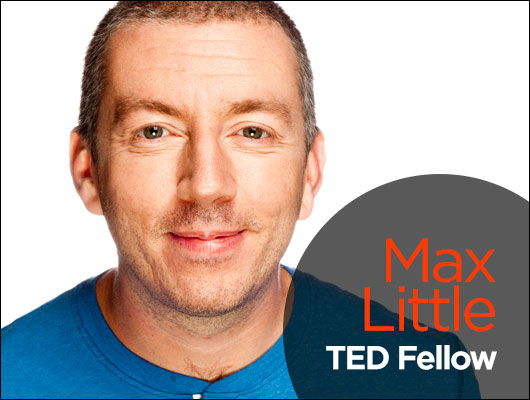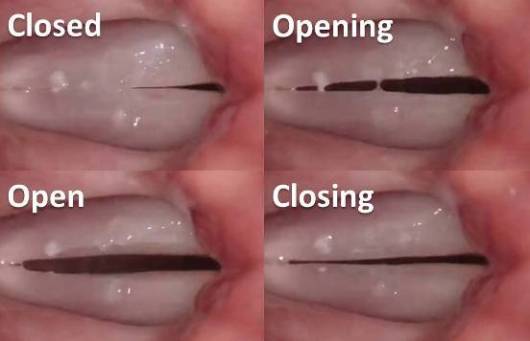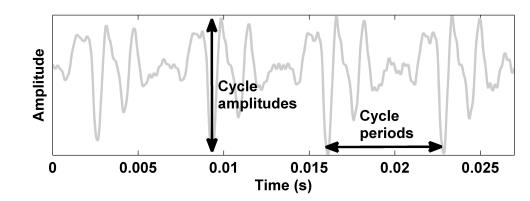What’s happening today with the Parkinson’s Voice Initiative?
It has been an overwhelming response. We now have around 18,000 participants — nearly twice my most ambitious goal of 10,000! We’re wrapping up the data collection phase of the project soon, and that’s when the hard work really begins, getting down to analysing mountains of voice data.
How will this data be used, and why was it so important to get this random sampling?
Nearly all the previous research I, or anyone else, has done in this discipline has been with heavily controlled, lab-based recordings. This is important but unfortunately it is of limited practical value, because outside the lab you cannot control how people will make voice sounds. So, if this technology is going to become useful I believe that it is necessary to test it “in the wild,” that is, outside the lab, under circumstances that we, as researchers, cannot control. There may be many confounding factors, such as a poor quality telephone line, someone moving their microphone while making voice sounds, or someone having an unexpected disorder or condition — even heavy smoking, for example — that leads to voice changes that sound like Parkinson’s.
The brute-force way to tackle this is to gather as much data as you can, so that you randomize across lots of different circumstances and uncontrolled effects like this. In collecting a very large sample, I aim to get very good statistical power in answering the question about just how effective this technique will be when used outside the lab. It can also be used to develop new algorithms if necessary, which might address any shortcomings in existing algorithms that were developed under the expectation of lab conditions.
How will this technology be applied?
I can’t say too much at this stage because things are in development, but suffice to say that there are some exciting new projects about to get under way in the new year. In conjunction with a long-time collaborator we will be looking to bring this technology into practical use for symptom self-reports, and we will be extending this to other neurological disorders as well. Another project is going to be combining voice data with other symptoms such as lower and upper limb dexterity, using smartphones. We will be tracking patients on an hour-by-hour basis and so obtain an extraordinarily detailed record of how symptoms progress on a very short time scale. This kind of data is going to be very critical for drug timing and dosage studies.
And finally, the one that I am particularly enthusiastic about is a study of voice symptoms in populations who have a known genetic predisposition to Parkinson’s. This is real “blue skies” research and none of us on this team know if it will work out, but if it did, it would be a game-changer for sure: a simple, non-invasive, widely accessible way to screen for Parkinson’s before the classic, clinical symptoms have even emerged!
This has amazing potential, yet you didn’t even start out with the intention of diagnosing Parkinson’s! What was the original application for the voice signal processing you had been developing at Oxford?
My PhD at Oxford was in nonlinear voice signal processing algorithms and I was casting around, as many students do in the middle of their studies, for a worthy application for these mainly theoretical advances. I had done some work in the analysis of voice disorders using these algorithms, but it wasn’t until 2006, when I met up with a researcher at Intel Corporation, that I became aware that people were interested in voice in Parkinson’s disease. Intel had received some funding from one of their co-founders, Andy Grove, who, having recently been diagnosed with the disease, wanted to find a way to rapidly and non-invasively measure all aspects of the symptoms on a daily basis. When Intel’s collaborators sent me voice recordings they had been collecting from Parkinson’s patients and healthy controls, I tested out my algorithms and found they could identify those with Parkinson’s to around 86% accuracy. That was a surprise to both of us, because these algorithms were aimed at detecting voice disorders, not Parkinson’s. So we formed a more long-lasting collaboration and started work to identify more sophisticated algorithms to try and push up the accuracy. Intel co-funded Thanasis Tsanas’ studentship at Oxford and he has done incredible work finding new algorithms, so that now, we can demonstrate around 99% overall accuracy.
You started out as a video game audio engineer. How did you come to work in applied mathematics?
Working as an audio engineer and programmer in the gaming industry, I composed sound effects and music and developed the software to integrate this audio into the game code. It was a lot of fun, as I was able to combine my enthusiasm for music and sound with my experience in coding. There are a lot of very technically challenging problems in that job, such as the need to implement a marriage of real-time responsiveness with audio integrity and coherence under severely limited computational resources. It was those challenges that led to a realization that applied mathematical models can be extremely powerful tools to balance these engineering trade-offs. This is perhaps the main reason that I became interested in mathematics, and I wanted to educate myself in the topic. So, I enrolled in a distance degree course at the Open University in the UK, which I thoroughly enjoyed. In doing so I also discovered that I seemed to be pretty good at it – I aced the course with one of the highest first-class results possible!
I grew up in the south of England and we had a house in the beautiful Kent countryside. I went to a rather weird Rudolph Steiner school which had an unusual curriculum, to say the least! I think the emphasis of the teaching was on self-fulfillment more the educational attainment. It was a lot of fun. I grew up with music and art at home, and we always had very lively discussions as a family. No topic was off bounds.
At the same time, I was always fascinated by electronics and computers, making all sorts of electronic contraptions. By the time I left elementary school I already had quite a bit of a background in hacking hardware and software. I also learned to play several musical instruments and composed and recorded songs alone and with friends. That all turned out to be very useful experience in the video games industry!
You had a pretty amazing experience at TEDGlobal 2012 — your life seemed to change overnight! Can you describe how your life has been influenced by being a TED Fellow?
Apart from the obviously life-changing event of the birth of my second son when I was on the TED Fellows stage, you mean? No, for sure, my life has changed completely in other ways, too! Before becoming a Fellow and speaking at the conference, my research was known among my academic peers, but mostly not outside that circle. Since becoming a Fellow, news of my research has reached completely different audiences far outside the original circle, and this has had some fantastic consequences. Most crucially perhaps, it has helped in finding researchers in other areas who share an interest in what I am doing — people who are in a position to offer vital expertise that can take my research to the next level — and I might never have had the opportunity to connect with these people were it not for the exposure bought about by the fellowship.
It has also definitely raised the profile of the discipline of biomedical voice analysis: this is important because now, others outside the discipline see the intrinsic value in the work my peers and I are doing. Perhaps most importantly, I have gained what I believe to be a lifelong circle of like-minded individuals in the other TED Fellows. I am always humbled by their extraordinary achievements and the conversations I have with them on a daily basis help sustain my enthusiasm and ambitions.
And launching the Parkinson’s Voice Project at TEDGlobal 2012 was instrumental. My talk was picked up by the BBC and several other influential news outlets who helped raise awareness of the project. This led to big responses on social media that further helped to spread the word. Within the first day or so we had already received something in the region of 1,500 calls! In the following weeks and months, other outlets such as the Wall Street Journal picked up on the project and this exposure drove the number of participants up still further. One of the most amazing responses was to an interview on NPR’s flagship All Things Considered show – this has an audience of around 17 million listeners across the US. Another incredible moment was when the project featured on the front page of Reddit – at one point I was seeing around 200 simultaneous visitors. So, the campaign to hit the final target came in separate bursts, but these bursts were all sparked by the original exposure at TED.
So what’s next?
I’ve just accepted an assistant professorship in the mathematics department at Aston University in the UK. The Wellcome Trust are sponsoring the first two years of this position where I’ll be following up on my work in Parkinson’s. In the longer term, I’ll be addressing in detail the more theoretical side of the signal processing and machine learning algorithms needed to analyze these kinds of biological signals. Life as a postdoc on a string of 2 or 3 year contracts has a way of fracturing one’s aims and ambitions, so it is a tremendous boost to have finally found an academic “home” for my research work.



Comments